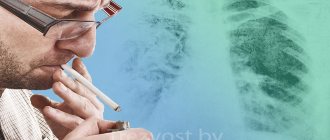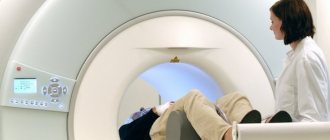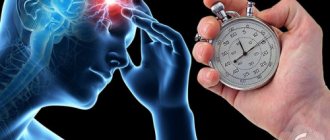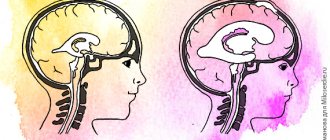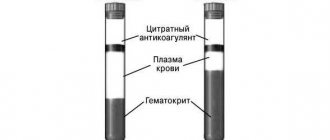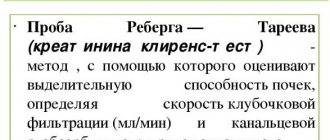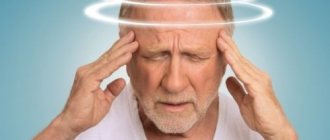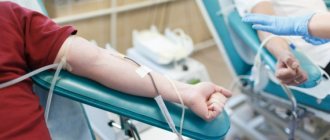Long before the beginning of our era, the “father of medicine,” Hippocrates, made observations of a number of brain diseases that ended in loss of consciousness, and recorded them. Scientists believe that the great philosopher and physician observed strokes in his patients.
During the Middle Ages, the concept of “apoplexy” appeared, which for a long time entered the medical lexicon to designate an insidious and almost always unexpected stroke. Preventing stroke and heart attack is not a difficult task, but one that requires consistency.
The Center for Aerospace Medicine uses the latest advances in modern technology to help patients who have suffered a stroke. Equipment that teaches astronauts to control their bodies in zero gravity trains the muscles of patients who have forgotten how to walk and talk.
What is a stroke and what are its statistics in Russia?
This is a pathological condition caused by an acute cerebral circulatory disorder. The nature of the disorders can be different, hence the types of stroke. Most strokes are called ischemic. Almost 80% of total cases. In this situation, blood circulation stops in a certain area of the brain due to the presence of a blockage of blood vessels or a blood clot. The other part is associated with cerebral hemorrhages.
In Russia, almost half a million citizens suffer a stroke every year. Approximately 15% of those infected die. Statistics show that since 2014, data on the number of diseases has been increasing. I am glad that mortality rates are decreasing.
The international medical project Global Burden Diseases (GBD) conducted research on stroke statistics on a global scale. Results and analyzes were published in 2015. According to the statistics obtained, almost ten and a half million people suffer a stroke every year in the world. Two thirds of them are fatal. Deaths from stroke are 30% higher than fatal heart attacks.
Having such a disease and staying alive does not mean that the danger has passed. Another scary figure of 10% is repeated cases. And if in the first case the patient was saved, a second stroke in most cases leads to death. According to statistics, every fifth patient experiences the disease again. And among those who have it once, almost 45% die within one year.
If the consequences of the disease were not fatal, in most cases the patient becomes disabled. Only about 20% of those recovered return to work. In 60% of cases, a person’s health condition is such that he is able to take care of himself. And approximately 30% become completely dependent on outside help. Help is needed to perform basic activities: moving, eating, taking a bath. In almost all cases, communication problems arise. Dementia (acquired dementia) is on the list of particular consequences of a stroke. More than 90% of patients become depressed.
And, of course, the degree of improvement in health depends entirely on the recovery period and the efforts spent on rehabilitation. Thus, mechanotherapy helps restore tone to the leg muscles and promotes the development of walking skills. support load simulator “Corvit can provide good assistance here .
For better stimulation of movement, a virtual reality system is used. But the Regent medical suit is capable of affecting many muscles throughout the body. This is a highly effective rehabilitation tool for the active restoration of walking skills. Care, patience and painstaking care, and the help of loved ones together with the use of mechanical assistants increase the chances not only of survival, but also of a quality life.
Primary and secondary prevention of stroke
Stroke prevention can be primary and secondary. Primary prevention consists of taking measures to prevent acute cerebrovascular accidents in healthy people. As mentioned above, 3 rules are important here: normalizing weight, giving up bad habits and physical activity.
Secondary prevention involves preventing a recurrent stroke, and here the range of tools is much larger. Doctors additionally include:
- Full rehabilitation in specialized institutions.
- Prescribing a diet that limits foods that contribute to the accumulation of bad cholesterol.
- If necessary, surgical correction of cerebral vessel patency.
Drug maintenance therapy is also important - the use of drugs that reduce the risk of thrombosis, antihypertensive drugs, nootropic drugs.
People who have had a stroke
Family support and round-the-clock assistance from loved ones are very important in restoring the vital and communicative functions of the injured body of a patient who has suffered a stroke.
Mom of Artem, who suffered a stroke:
“There comes a moment when you understand: that’s it, there’s no more strength. It is necessary that there is always someone nearby who will help and advise. We need a lot of things that are not cheap: walkers, a special bed, hygiene products...”
Alena, Roman's daughter:
“Dad fell when he took off his coat after coming home from work. He just fell and began to move his arms and legs incomprehensibly. An ambulance took him to the hospital. Stroke. It is not clear for what reason. I was discharged after three weeks. What's next? Then everything falls on the shoulders of the family..."
Elena, charity fund employee:
“I myself work in the field of providing support to families in difficult situations, and when trouble came to my house, I was at a loss. I even needed the help of a psychologist. A very difficult burden falls on the shoulders of relatives. My brother, who suffered a stroke, could not receive free help from the state because his disability had not yet been formalized. And you can apply for disability only four months after the stroke. It is assumed that during this time the patient can recover. The only thing we achieved was two weeks in a rehabilitation center to recover. We will soon complete all the documents and send him there...”
Nina, Evgeniy’s mother:
“It was a very scary time. Zhenya was at the dacha with us. He is still young - only 24 years old. When the accident happened, we had to wait a long time for an ambulance - more than an hour. Then the son was examined at the hospital and underwent an examination. A stroke was diagnosed. We couldn't understand how this could happen. It turned out that there was no neurosurgeon at the local city hospital on the weekend, and there was no one to help our son. I had to take him to Moscow in a paid ambulance. Zhenya was already unconscious. Unfortunately, time played a bad role - the son fell into a coma... A lot of time passed before our beautiful and previously strong son began to speak and move a little. One side of his entire body is almost completely paralyzed, but he works hard every day and doesn’t give up. The cause of the stroke, according to doctors, was a congenital pathology of the cerebral vessels.”
How to avoid another brain stroke?
Doctors are sure: to avoid another stroke, you need to thoroughly rethink your life. Patients who have had a previous stroke should:
- Monitor blood pressure daily.
- Follow all doctor’s prescriptions, take medications in a timely manner - cerebroprotectors and anticoagulants.
- Normalize sleep and rest patterns.
- Give up bad habits - smoking, drinking alcohol.
- Control your weight (obesity is a predisposing factor for the development of recurrent stroke).
- Go in for sports (physical therapy, breathing exercises and moderate physical activity are indicated, for example, swimming).
What to do immediately after a stroke?
In the last case, with a young guy, there was a very good chance of a quick recovery. But time, which doctors say plays the biggest role in the severity of the disease, was lost. If Evgeny had not been at the dacha... if there had been a specialized clinic in a town near Moscow... Perhaps now he would be playing football again with his friends. But while he meets them at home in walkers, they help them do exercises and get to the stands of the football field to watch the game together . Prevention of stroke in young men is to allow them to lead a normal lifestyle, with as much activity as possible.
The most vital period is the first hours after a stroke. Doctors have no more than four hours to prevent irreversible processes. Even how to place a victim’s arm or leg in the first minutes can save a life and improve a person’s health.
The mentality of Russians is such that they turn to ambulance services only when they are really “pressed” and feel scared. But a stroke rarely occurs without a cause or without symptoms. Increases and surges in blood pressure are one of the indicative symptoms. And it should not be that the drug is taken at the time of high blood pressure as a symptomatic medicine. There must be a doctor-prescribed regimen of a set of medications that maintain the circulatory system of a hypertensive patient in a stable state.
The risk of having a heart attack or stroke is very high when blood pressure fluctuates. It happens that a person goes to a neighbor, consults with her, takes some kind of pill that definitely helped her in a similar situation... And time runs out. The most “advanced” neighbors can even install an IV. So, just in case, “clean the vessels.” And the main and most popular “healer” is the Internet. He will make a diagnosis based on the signs, treat you, and even help provide first aid. The only correct action in case of a stroke is to call an ambulance!
There is another problem that takes away the patient’s precious time. People around him simply cannot recognize the disease by observing a person. He is often mistaken for drunk. Such a passerby may lose coordination, speak incoherently, and generally not perceive questions and remarks. These signs are similar to signs of alcohol intoxication. Therefore, the attentiveness of strangers, their responsiveness and concern can save a person’s life.
In the very first days after emergency medical care, you need to start doing massages to the injured part of the body, carry out physical therapy, and follow doctors’ orders for drug therapy. Of course, rehabilitation results depend on the severity of the blow. But 50% of success depends on the speed and competence of the first medical actions provided.
Another important point that determines the success of restoration. Help is needed not only for the victim, but, it turns out, for his loved ones as well. Out of surprise and confusion, they may panic and miss precious time. Such families need both psychological and informational support. Confusion comes from a lack of information. Websites or stands of clinics do not tell you what to do in the first minutes. The doctor will not explain which fund or social security agency to contact to get help. The main thing is not to fall into despair; you can find ways to rehabilitation and financial assistance. Although in our country this is a difficult path. There is a fund to fight stroke.
If trouble comes, you need to urgently call an ambulance. Only in 20% of cases of strokes in Russia was the patient immediately contacted by a doctor. If the fact of a sad disease is confirmed, you can call the free stroke hotline and get the necessary information: 8 (800) 7075229.
People working at the fund know what the relatives of patients who have suffered such a blow to their health need. This is information, psychological help, and of course financial. If possible, they can arrange to pay for rehabilitation procedures or purchase the necessary equipment to restore body mobility. Information support consists of talking about the disease itself, the prospects and stages of recovery, and prevention of ischemic stroke (repeated cases).
It is important to learn how to arrange the life and home environment conveniently for a recovering patient. You also need to know about the legal aspects of registering disability and the resources provided by the state. Communication with people who believe in the success of each patient’s recovery helps loved ones to survive psychologically and not fall into despair from the complexity of their life situation.
Our center successfully works with patients who need to “tune” their muscles to work properly. The unique immersion bath “Medsim ” offers a method of influencing the whole body. Dry immersion is also useful for the patient’s loved ones as a way to combat stress and tension.
St. Petersburg State Budgetary Healthcare Institution "Nikolaevskaya Hospital"
July 19, 2019
What is a stroke
Effective prevention of cerebral stroke is impossible without knowledge of the causes of the development of this disease.
A stroke is a serious (acute) problem with blood circulation in the brain. The cause may be a rupture of some, not necessarily large, vessel - this type of stroke is called hemorrhagic. Or a blood clot that blocks the flow of blood is a stroke, respectively, an ischemic stroke.
Depending on which part of the brain was damaged, the neurological functions for which it was responsible suffer. Someone loses their speech. Someone is paralyzed - partially or completely. Some people have breathing problems. Some people even die.
Stroke statistics are disappointing: 31% of patients who have suffered a stroke require special care, 20% cannot walk independently, and only 8% return to normal life after long rehabilitation. But the worst part is that stroke is difficult to predict. It’s not for nothing that it’s called a stroke: an acute brain disorder develops suddenly and quickly. Often literally out of nowhere: just now the person was laughing and joking, and now they call him an ambulance.
Who's at risk
Some people are more vulnerable to developing a stroke than others. And most often these are those who:
Suffering from hypertension. This is the most common cause of strokes.
Has some kind of heart disease (for example, heart failure or arrhythmia).
Suffering from diabetes. Diabetes damages blood vessels, including those of the brain, increasing the risk of hemorrhages.
Is overweight.
Takes certain medications. Dangerous medications include those that alter estrogen levels. For example, birth control pills.
Leads a sedentary lifestyle.
Has high blood cholesterol levels.
Smokes.
Suffering from sleep apnea.
Over 55 years old. According to statistics, every decade after age 55, the risk of having a stroke doubles.
Has a family history of strokes: one of his close relatives became victims of a stroke.
Is a man. Women have a significantly lower risk of stroke.
If at least a few points can be attributed to you, you need to take care of yourself. Preferably today.
What to do to prevent stroke
Stroke prevention comes down primarily to lifestyle modifications. Here's what, according to experts from a reputable research organization, should be done first:
- Control your blood pressure People suffering from arterial hypertension are especially likely to suffer from strokes. It is they who experience brain hemorrhages (hemorrhagic strokes). Moreover, two scenarios are possible: either one of the brain vessels ruptures, or blood leaks through its wall into the surrounding tissue for some time. In any case, high blood pressure (or pressure surges) plays a major role in this process. And for a hypertensive patient, it is very important to keep the situation under control and regularly take medications prescribed by a doctor to help maintain blood pressure at an optimal level - no more than 130/80 mmHg.
- Control your cholesterol levels Most strokes occur due to narrowing or complete blockage of the arteries in the brain (ischemic stroke). The cause is cholesterol plaques deposited on the walls of blood vessels. To minimize the likelihood of disease, it is necessary to adhere to a diet that involves limiting fat intake. It should be borne in mind that not all fats are harmful to the body (for example, polyunsaturated omega-3 and omega-6 fatty acids are very beneficial).
- Control your blood sugar levels According to statistics, the presence of diabetes increases the risk of stroke by 2.5 times. This is not surprising: diabetics often experience heart failure, excess weight and poor condition of the walls of blood vessels. In addition, when carbohydrate metabolism is disturbed, the rate of removal of water from the body increases, which increases the thickness of the blood. To avoid the development of a stroke, it is necessary to monitor your diet, limit the consumption of fast carbohydrates and monitor blood glucose levels by periodically taking appropriate tests.
- Watch your weight Excess weight brings with it several factors that increase the risk of stroke. This includes an increase in blood pressure, cardiovascular diseases, and the possible development of diabetes. Losing even 4-5 extra pounds will greatly improve your chances of avoiding a stroke.
- Eat more vegetables and fruits At least 4-5 servings (apple, coleslaw, grilled vegetables, etc.) per day. Plant foods lower blood pressure and improve vascular elasticity. And this, in turn, is an excellent stroke prevention.
- Quit smoking And also visit smoking rooms for company. Passive smoking, like active smoking, has a destructive effect on blood vessels.
- Exercise regularly Physical activity reduces the risk of developing all types of stroke. Aerobic training is especially good: walking, running, swimming, cycling, low-impact fitness. The exercises work comprehensively. They help reduce weight, improve the overall condition of blood vessels and the heart, and reduce stress. Try to increase the duration of your daily workouts to at least 30 minutes.
- Manage stress At the moment of nervous tension, a large amount of adrenaline is released into the bloodstream. Glucose levels rise sharply, the heart begins to work more actively, and blood pressure rises. There is a simultaneous load on the vessels, which can lead to a stroke. Of course, it is impossible to completely eliminate stress from life, but it is worth learning to control your reaction to stressful situations. People prone to nervousness may need to consult a doctor - he will recommend sedatives.
- Get an annual medical examination. A timely visit to the doctor will help to identify health problems in time and begin treatment on time. Unfortunately, it is impossible to reduce the risk of stroke to zero. Therefore, in addition to preventive measures, it is important to know what a stroke looks like and what to do if it happens to you or someone around you. Doctors have several hours to save a person. Everyone needs to know the symptoms of a stroke in order to recognize the disease in time.
Stroke is the second (after coronary heart disease) cause of death in Russia. A fifth of patients become severely disabled after a stroke. But many consequences can be prevented if you call a doctor in time.
The first 3-6 hours after a stroke are the “therapeutic window” - the time during which medical care is most effective. Sometimes a person does not immediately notice that something is wrong with him, or thinks that the ailment will go away on its own. Because of this, valuable time is lost. Therefore, it is important to know what a stroke looks like and what to do if it occurs.
Main signs of stroke
1. A sudden and severe headache begins.
2. The man loses consciousness.
3. Balance is disturbed, gait becomes unsteady.
4. Part of the body on one side, for example, half of the face, goes numb.
5. Speech problems appear: it is difficult to pronounce words.
6. Vision is lost in one eye or in both eyes at once.
How to understand for sure that it is a stroke
Ask the person to do a few simple steps:
- Smile. If a person cannot smile or the smile comes out one-sided (and this was not the case before), sound the alarm.
- Speak. Ask the person to repeat a simple sentence after you or recite a poem. After a stroke, articulation is impaired and speech becomes slurred.
- Stick out tongue. If a person cannot do this, if the tongue involuntarily tilts to one side or looks askew, then this is a stroke.
- Raise both arms evenly. With a stroke, a person will not be able to control both hands equally well.
— Raise your hands in front of you and close your eyes. If one arm falls involuntarily, this is a sign of a stroke.
— Write an SMS. Researchers at Henry Ford Hospital noticed that patients who had no other signs of stroke were unable to type a coherent message, instead writing a nonsensical string of words without noticing it.
If a person has failed at least one of the tasks, this is enough to act immediately.
What to do if a person has a stroke
First, call an ambulance. Be sure to describe why you suspect a stroke: the headache began suddenly, the person lost consciousness or balance. Tell us what the patient cannot do: cannot smile, cannot raise both hands, cannot pronounce words.
If you have a stroke, you need professional help as quickly as possible.
After calling an ambulance, place the person on pillows, the elevation should start from the shoulder blades. Provide access to fresh air: open a window or door in the room, unfasten tight clothing.
Do not give water or food because organ functions may be impaired and the person may have difficulty swallowing.
If possible, measure your blood pressure. If it is elevated, give the person the blood pressure lowering drug that he usually takes. If there is no such pill, do not give anything.
Be healthy!
- Share:
- Livejournal
- Blogs@Mail.ru
- LiveInternet
- MySpace
Print page
Signs of a stroke and the first correct actions
Circulatory disorders in the brain or rupture of a vessel will manifest itself in the form of some symptoms:
- Sudden convulsions, pain piercing the head, severe weakness in the body.
- Fainting. Or a fainting state with loss of coordination, “legs can’t hold up.”
- Numbness in “half” of the body. Often there is a loss of sensation in the right or left arm, part of the face, or leg. Typically, a left-sided stroke causes paralysis and numbness on the right side. And vice versa.
- Less indicative signs, but present. Hiccups, high fever, vomiting.
- Changes in vision. The patient may experience double vision and blurred vision.
As you can see, the signs of a stroke can give a picture as if a person is intoxicated, poisoned, fainting and some other unpleasant illnesses. To make sure that it is really a stroke and immediately call an ambulance, you need to follow a few simple steps:
- ask the person to introduce himself, observe the harmony of his speech and his ability to remember his name;
- ask a couple of simple questions - you will understand if the patient cannot understand their meaning;
- try to convince the victim to smile - it’s so easy to understand whether part of the face is paralyzed, the numb area will work asymmetrically, the corner of the lip is drooping;
- give instructions to raise two hands up - perhaps only one will rise;
- an irregularly shaped protruding tongue is one of the sure signs of a dangerous disease.
If most of the actions taken confirm your fears, you need to call an ambulance. While the medical team is on the way, there are a few good things you can do to help reduce the harm a stroke can cause to the human body. The most important thing is to write down (don’t rely on memory) the time when the accident occurred. Open windows or doors in the room and provide fresh air. Place the patient in a comfortable position with the head slightly elevated. Blood flow through all vessels of the body must be free. To do this, you also need to loosen the squeezing items of clothing: tie, belt, collar. There is no need to offer food or drink, and if the urge to vomit occurs, it is better to turn your head to the side.
How to strengthen blood vessels to avoid stroke?
It is known that to prevent stroke one should “strengthen blood vessels,” but how exactly to do this? There are no medications that would make the walls of blood vessels more elastic, resilient and durable. All medications are prescribed for specific symptoms and self-medication is dangerous to health. It is only possible to take dietary supplements - Ascorutin, Ginkor Fort, etc.
If there is a great desire to “take care” of the vessels, then this can be done with the help of traditional medicine. Their effectiveness is mostly not recognized by evidence-based medicine, however, there will be no harm from using the plant extracts described below. Recommended:
- Freshly squeezed beet juice with honey - 1 teaspoon of honey per 100 ml of juice. Used in the morning on an empty stomach (before meals). Traditional healers claim that such a remedy will help get rid of headaches and prevent the deposition of cholesterol plaques on the walls of blood vessels.
- Sea buckthorn oil – take ½ teaspoon 2-3 times a day.
- Infusion of St. John's wort, rose hips and peppermint leaves. Raw materials are taken in 1 tbsp. spoon, pour a glass of boiling water and leave for 30 minutes. Take three times a day with honey. Be careful and consult a doctor before taking it, as St. John's wort is a strong remedy and has contraindications.
Causes of stroke
What should I take to prevent stroke? Vitamins, fresh air, sun and fresh healthy food.
All doctors unanimously say that this disease can and should be prevented. Stroke is a child of lifestyle. Most often it is caused by obesity, high blood pressure, and sugar. Pulse, cholesterol and blood pressure cannot be ignored. Control of these “parameters” - and a person will never know what a stroke is.
Of course, there is a problem of pathological conditions associated with congenital diseases of the blood vessels of the head. After all, even children suffer from cerebral hemorrhages. A timely computer examination (tomography) can prevent a sudden illness.
But 80% of patients do not belong to this category of patients. And, unfortunately, the group of initially healthy (in this sense) people is “getting younger.” Every year the number of patients aged 20–40 years increases by almost half a percent. The rhythm of life, hard work, stress and lack of normal sleep often become the causes of stroke in young people. In this age category, the first case does not always mean that there will be a second. This is a warning that you need to change your lifestyle. Prevention of stroke in middle-aged women and men is the task of modern medicine.
What should I take to prevent stroke?
Typically, medications are prescribed as part of secondary prevention and rehabilitation after stroke, which will be discussed below.
As part of primary prevention, only certain drugs can be used, most often for the treatment of diseases that increase the risk of developing cerebrovascular accidents. We are talking about the following groups of drugs:
- Nootropic drugs - improve the activity of the central nervous system, increase its resistance to negative influences, usually such drugs are taken in courses of 30 days.
- Beta blockers. These drugs can only be prescribed by the attending physician, who will select both the drug itself and the dosage regimen.
- Calcium antagonists. Normalizes blood pressure and heart rate. They have only a short-term effect.
- Antiplatelet medications (Acetylsalicylic acid) - prevent blood clots by thinning the blood. Long-term use is possible.
- Sedatives. Used for primary and secondary prevention of stroke.
Reducing the risk of stroke
So, it is lifestyle that plays a major role in the chances of encountering ischemia. And good habits, as we know, are formed from childhood. Prevention of cerebral stroke consists in eating properly and on time, only parents can teach you to love walks and active recreation. And only by example. But even in adulthood, at a conscious age, you can still change your way of life. Gradually, without stressful prohibitions, introduce changes into your daily habits. Sleep more, walk a little every day and eat more vegetables than baked goods. It is not difficult. Also try to quit smoking. Primary prevention of stroke is to monitor the body's medical indicators.
- People with unstable blood pressure are at greatest risk of encountering this pathology. A valuable recommendation from doctors is to constantly monitor the tonometer numbers and write them down on paper. There is no need to rely on memory. Analytical data recorded in writing will help the doctor accurately select medications and prescribe the correct doses and dosage regimens. You need to go to every appointment with a therapist with this “health notebook.” Even if you feel normal. The doctor will prescribe the necessary medications to prevent stroke.
- The recommendations given by the doctor must be followed as precisely as possible. Take medications at the right time and in the right quantity. Under no circumstances should you treat the prescribed regimen as an emergency prescription and leave it for an emergency situation. You should not take breaks from taking medications.
- Patients suffering from diabetes need to monitor not only their sugar levels, but also their blood pressure data. These people are at increased risk of stroke. Maintaining your doctor's prescribed diet and sugar levels is not difficult. Much easier than dealing with the consequences of ischemia.
- Smoking. The cause of many chronic diseases. A sudden pathological condition can also occur due to the consequences of this bad habit. It's better to quit. Tobacco in the sense of developing the risk of coronary disease cannot be used in any form. This is an evil enemy of clean and healthy blood vessels. The modern market for smoking devices and compositions is huge. People at risk for stroke should give up any tobacco addiction.
- Cholesterol. This substance in the human body can become an ally of vascular disease. Doctors recommend that people over fifty years of age undergo an annual lipid profile test. This data helps the doctor determine whether the patient needs a diet, or whether it is time to use medications to maintain the desired level.
- The older generation (after 55) should be checked for narrowing of the blood vessels in the neck. It very often leads to strokes. A reduction of up to 50% can be considered relatively acceptable. If more, you may even need surgery. But planned surgery is better than an unexpected blow and negative changes in life.
- Secondary prevention of stroke includes aspects not directly related to medical recommendations - nutrition and physical activity. Just half an hour of any physical activity a day can save a person’s life or help avoid the fate of a disabled person. You need to find any activity that pleases your soul. You don't have to run at 6 am. You can walk to work. Or just take a walk in the evening. To avoid getting bored with the same city route, use headphones and an audiobook. This method makes physical exercise a pleasant and interesting pastime. Swimming pool, health group, bicycle. There are many free or inexpensive ways to add activity to your lifestyle.
- The World Health Organization has even issued specific dietary recommendations to reduce the risk of stroke. Alcohol has not become a prohibited product. Doctors recommend using it sparingly. But it is better to exclude dishes with a lot of fat: mayonnaise, cream, oils, pastry creams. Including types of coffee and hot chocolate that use heavy cream. Fried delicacies also have no place on a healthy table: potatoes, goose and other fatty meats, duck. Fish and fish products are welcome, restrictions only on the consumption of caviar in large quantities. Recommended foods and dishes for prevention:
- meat from chicken, veal, game rabbit;
- fish from white fish without restrictions and more fatty (herring, sardines, tuna, salmon, pink salmon and chum salmon);
- dairy using low-fat varieties of cheese, cottage cheese, kefir;
- cereals are better from wholemeal flour, mainly from oatmeal and wheat, porridge from unpolished rice and long-cooked oatmeal;
- fruits and vegetables almost without restrictions;
- those with a sweet tooth should choose desserts based on gelatin and sugar-free fruit puree;
- use lemon, natural yoghurts and sour cream as seasonings, without using industrial packaged sauces.
High-quality products and home-cooked meals are good tools for preventing stroke.
How to avoid stroke in men?
Stroke prevention measures are extremely important for men, as they are at risk, especially if the person has comorbidities, smokes, is obese or has diabetes. Doctors advise all representatives of the stronger sex:
- To refuse from bad habits.
- Monitor your blood pressure and periodically take a blood test for your lipid profile.
- Reduce the amount of salt you consume by increasing the amount of fresh vegetables and fruits.
- Play sports and often walk outdoors.
- Minimize stress levels, do not overwork at work.
- Do not ignore medical examinations and medical examinations.
- Do not ignore a headache, especially if the headache is frequent and severe; you should also pay attention to sudden dizziness.
Stroke rehabilitation
The rehabilitation period can take varying amounts of time. But in any case, several periods of recovery can be distinguished. Experts highlight the following:
- The first month is an acute period. Usually, immediately after the impact, the patient is in the neurology or angiosurgery department, under the supervision of doctors. Then, if the dynamics are favorable, the patient is discharged home into the arms of relatives.
- The first six months are an early recovery period. The most important system that needs to improve is the respiratory system. Breathing skills must be relearned within the first three months. This recovery period can take place in a special center under the guidance of specialists or at home, with the help of loved ones and, possibly, rehabilitation equipment.
- The first year is a late recovery period. It can also be carried out both at home and in a hospital setting. If possible (financially), relatives can place the patient in a rehabilitation center for a long time.
- The remote period is a later time that can extend indefinitely.
Why is rehabilitation necessary? Can damaged cells really be “born” again? Why months and years of patient training and procedures? This is true. The human body is incredibly capable of regenerating. Those tasks that were performed by the dead particles will be transferred to other cells. Neighboring “bricks” will rebuild their functions, rebuild the entire brain infrastructure and help the injured “colleagues” recover. Those connections that were inactive until now are activated. Success is only possible if you start working from the very first day.
The most basic problem with ischemia is impaired motor function. The joints are subject to trophic lesions, and it becomes difficult to fully bend or straighten, for example, an arm. The fight against such conditions must begin immediately, during the acute period. Any exercises and influences of a motor nature will be beneficial: inflating balloons, squeezing and unclenching toys, massage and similar manipulations.
The basic principles of successful rehabilitation are a systematic approach, strictly organized. The patient's impairments occur in different systems, so a multifaceted approach to recovery after stroke . The coordinated actions of different specialists will definitely contribute to successful recovery. The basic principles of rehabilitation should be intensity, continuous procedures and a consistent treatment strategy.
First signs and symptoms
Before a stroke, drowsiness, headache, numbness of the limbs, fatigue, spots before the eyes, nausea, dizziness, temperature fluctuations, and blood pressure jumps appear. These are the harbingers or first signs of a stroke that appear several hours or days before the disaster. Most often, these symptoms are ignored, or they are attributed to fatigue and overwork.
Symptoms of a stroke themselves are divided into general cerebral and focal. They can be of varying degrees of severity depending on the prevalence of the pathological process.
- General cerebral symptoms: headache, impaired consciousness up to loss of consciousness, stupor, agitation or weakness, disorientation in space and time, sweating, feeling hot, convulsions. Makes you feel sleepy and sometimes chills.
- The focal abnormalities of a stroke depend on which area of the brain is affected. They can be unilateral or bilateral. This group includes disturbances in speech, vision (visual hallucinations), gait, movements up to paralysis, and sensitivity.
Symptoms of ischemic cerebral stroke develop gradually, with focal symptoms predominant.
With a hemorrhagic stroke, the onset is rapid, with a predominance of cerebral symptoms.
There are several stages in the development of a stroke: the acute period (from the moment of the stroke to 3 weeks on average), the recovery period - from 2 weeks to 24 months.
What factors lead to stroke?
Risk factors often “work” for several decades before a stroke. Long-term causes of stroke are bad habits, and above all smoking, alcohol abuse, unhealthy diet with a predominance of animal fats and easily digestible carbohydrates (fast food, cola, pork kebab and mayonnaise), physical inactivity, and obesity. Diabetes mellitus, especially type 2, which in our time is becoming an epidemic, makes a big contribution.
A separate story is hypertension.
WHO recently lowered the blood pressure threshold from 140/90 mmHg. Art. up to 130/80 mm Hg. Art.
An episodic increase in blood pressure above these figures requires observation by a cardiologist and the beginning of systematic blood pressure monitoring, non-drug, and possibly medicinal treatment methods.

